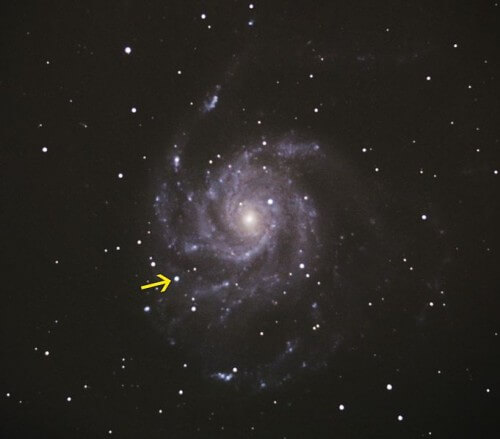The light emitted from type 1a supernovae helps researchers interested in measuring cosmic distances in the universe - such as, for example, the scientists who first discovered the accelerated expansion of the universe

The light emitted from type 1a supernovae helps researchers interested in measuring cosmic distances in the universe - such as, for example, the scientists who first discovered the accelerated expansion of the universe, who received the Nobel Prize in Physics for this discovery in 2011, but scientists still do not understand why and how these huge explosions occur. A new study published by Weizmann Institute of Science scientists, who are partners in an international research program for the study of supernovae at Palomar Observatory in California, (PTF), dispels some of the fog, and explains why certain stars end their lives as supernovae.
The new findings were obtained using automatic telescopes, whose purpose is to identify signs of supernovae in the first stages of development, which managed to catch such an explosion only half a day after the start of the process. The great achievement was due not only to the exact timing, but also to the location of the supernova - in the "Vanula Galaxy", located only 6.4 megafarsecs (about 21 million light years) from Earth - the closest event in the last 25 years.
Weizmann Institute of Science scientists, Dr. Ofek and Dr. Avishi Gal-Yam from the Department of Particle Physics and Astrophysics, recently published three articles, two of which appeared in the scientific journal Nature and one in The Astrophysical Journal, based on the initial observations and analyzes of the neighboring supernova .
The supernova observations were made using telescopes based on X-rays and radio waves, which are placed on the surface of the Earth or in space. In addition, the scientists went back and examined photographs of the "vane galaxy" previously taken by the "Hubble" space telescope, to try to identify signs of the star system that gave birth to the supernova, even before the explosion.
To the scientists' surprise, the X-ray and radio telescope observations did not yield significant data, and the archival research did not reveal any preliminary data either. However, precisely this lack made it possible to reject some of the different scenarios proposed for the initial situation that leads to the explosion.
These scenarios fall into one of two general categories, and both involve dense, ancient stars called white dwarfs. In one scenario, two white dwarfs merge, and the combined, unstable mass causes a thermonuclear explosion. In the second scenario, the heavy white dwarf attracts material from a "companion star" until it passes the limit of stable weight, and thus the explosion is caused. The role of "companions" may be fulfilled by a wide range of stars, starting from red giants made of gas, to medium-sized stars, such as our Sun.
The results of the study included an analysis of the material launched into space during the explosion, as well as an analysis of the "shock burst", which occurs when the light released in the shock wave passes through the mass of the material blown into space - which was done by research student Itai Rabink from Prof. Eli Waxman's group at the Weizmann Institute of Science. The findings showed that the exploding star was, as expected, a white dwarf. The picture painted before the eyes of the scientists pointed to a very compressed star: its diameter is much smaller than that of our Sun. The team was unable to rule out either of the two possible explosion scenarios, but put an upper limit on the size of the possible companion, showing that it could not be an extremely large star, such as, for example, a red giant.
"Although the scenario of a merger between two white dwarfs cannot be ruled out," says Dr. Ofek, "our results point to another possibility, according to which a medium-sized star - similar in size to the Sun - provides the additional material needed to create a supernova."

2 תגובות
Moshiko
"There is no such thing as "out of nowhere"??? Tell that to Yuval Sabdarmish. 🙂
Peace
I would like to raise a probability which I think is very tangible, of course I don't have the tools to prove it, but I would still like to receive your enlightened response against my dark and burning hypothesis?
The universe is created without a break: the universe continues to be created all the time without a break in that every black hole that swallows into it everything "that moves" basically brings out new stars. There is no such thing as "out of nowhere", everything that goes in will come out in some way,
And this is why creation is constantly renewed, therefore it will always seem to us that the universe is expanding
the curvature of space
In the theory of special relativity, Einstein stated that the three-dimensional physical location and time together form one space-time. In the theory of general relativity, Einstein turned to deal with the force of attraction, also called gravity. Seen from the perspective of space-time, gravity creates a distortion or curvature. And that's why basically everything that seems to accelerate from us and onward comes back as if from the "back door". But we don't have the tools to detect this, but only the acceleration and not the repetition or repeat, God forbid
Sincerely
Moshe Machedera